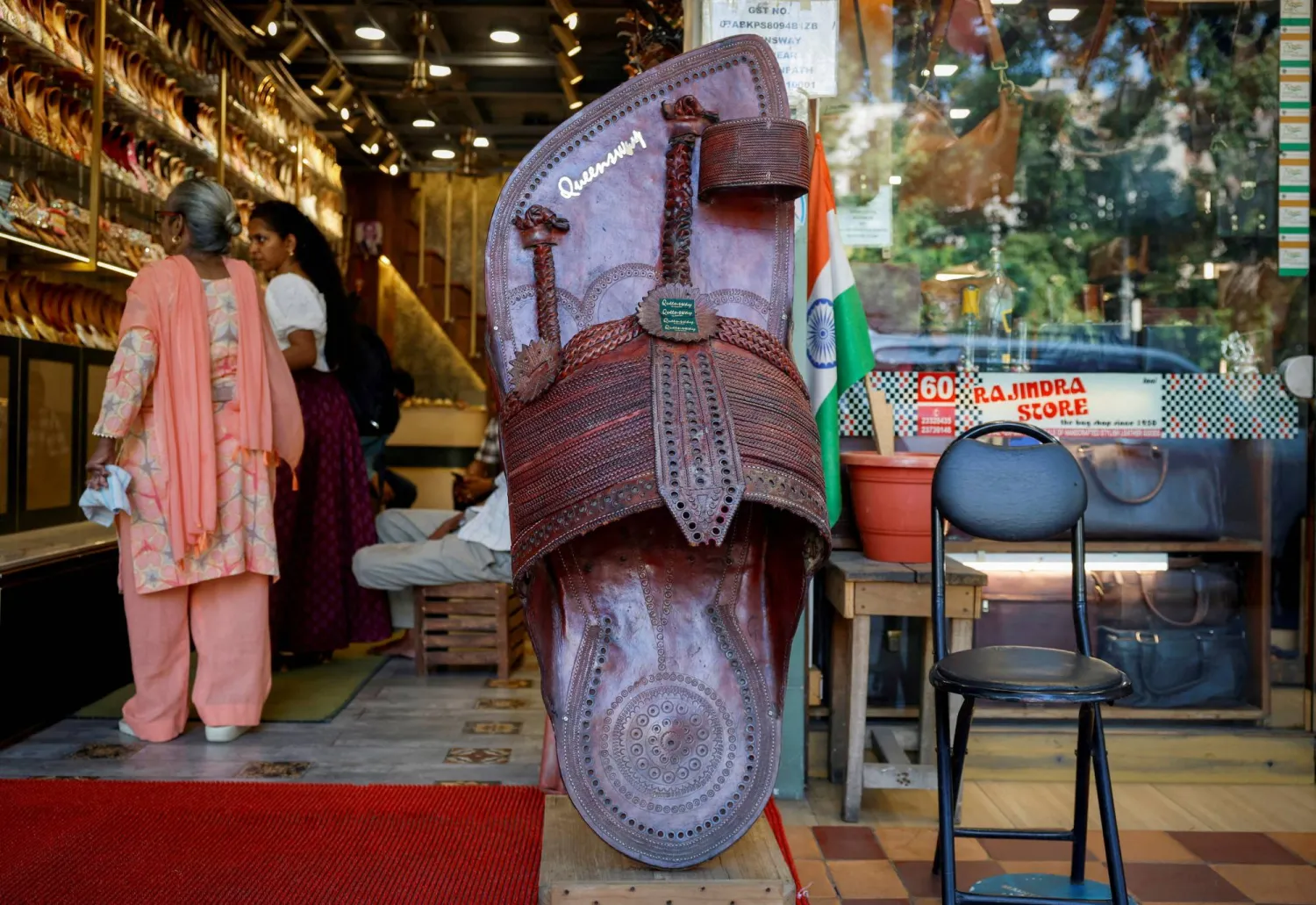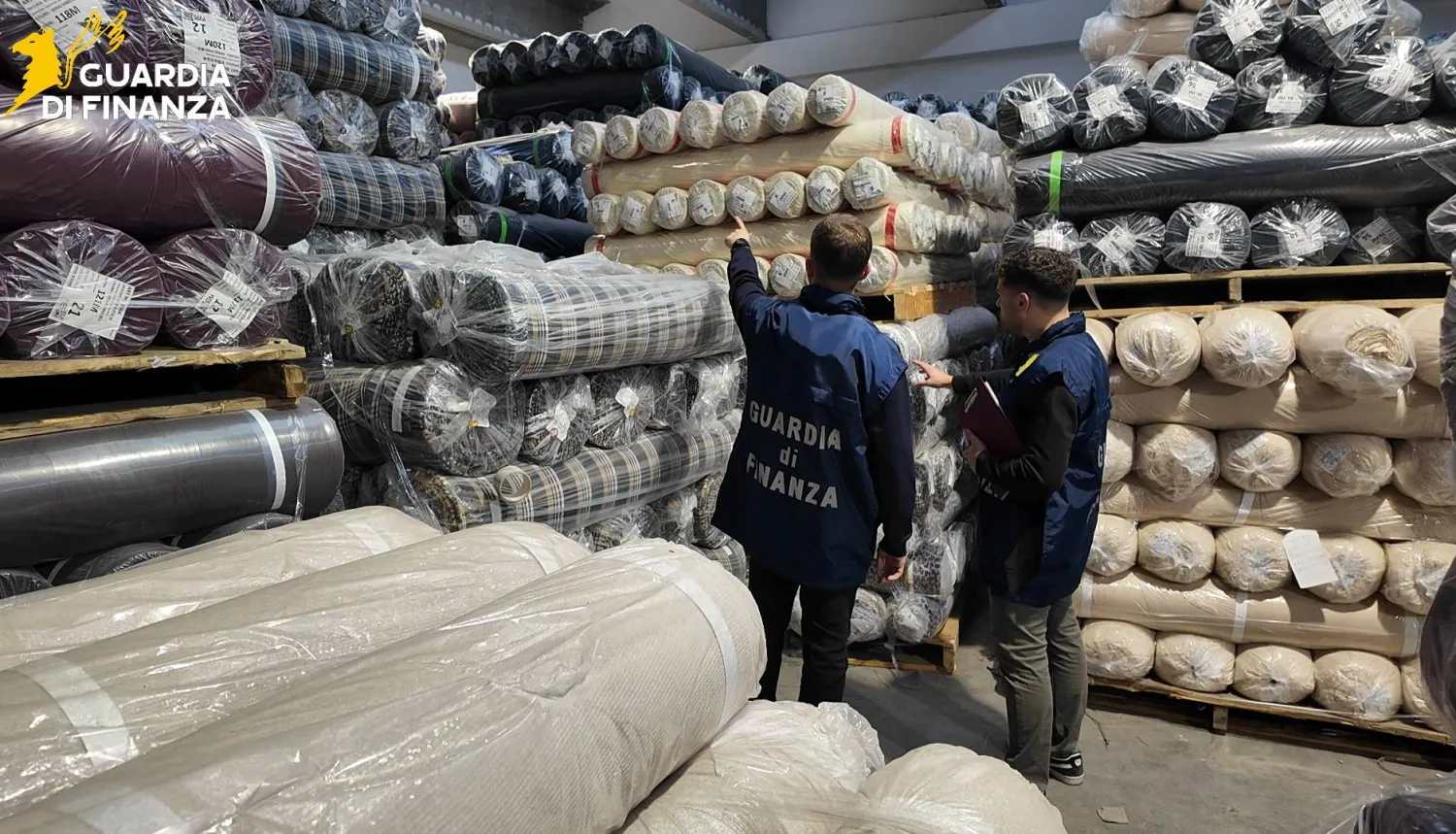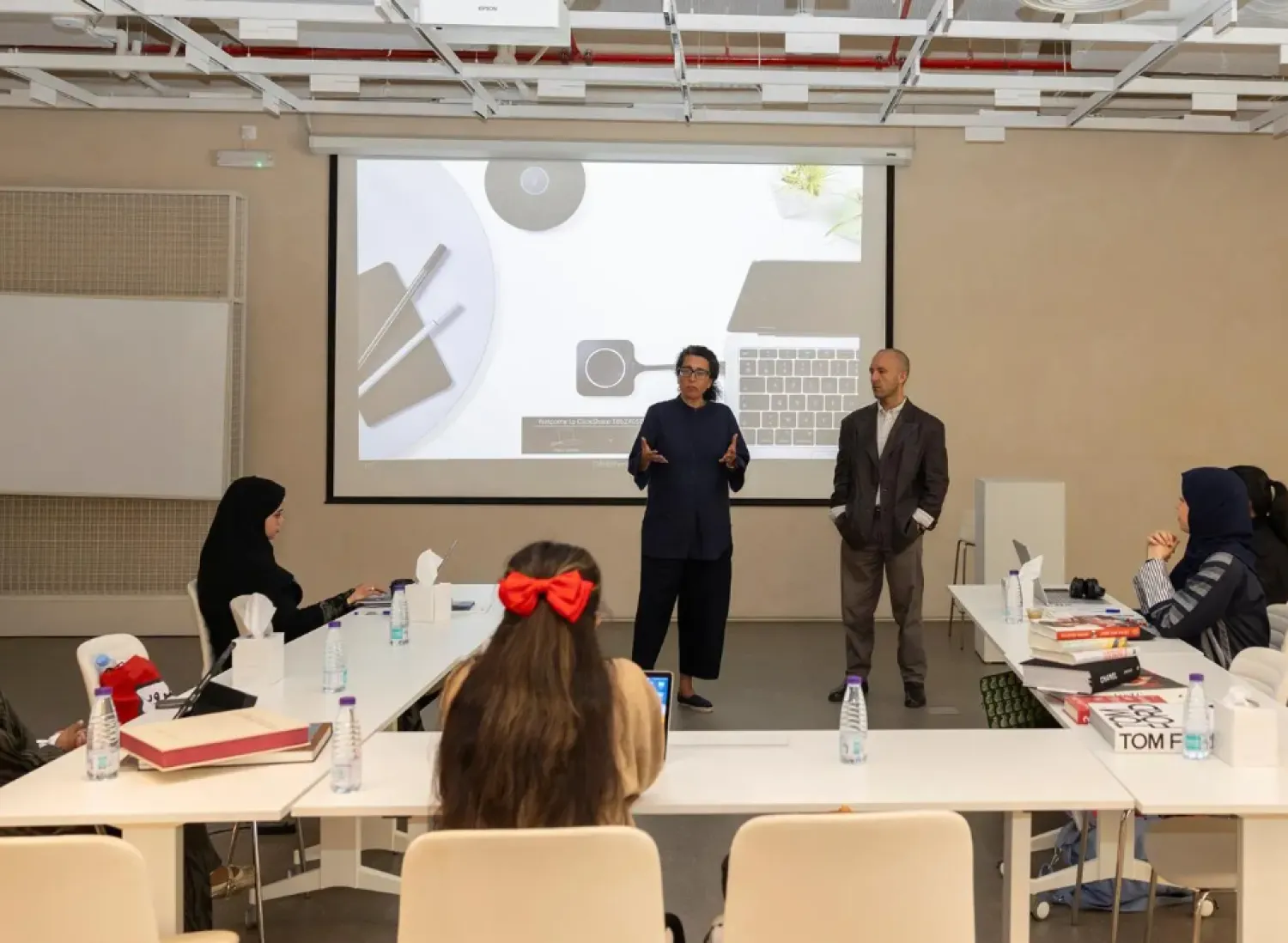Cars snaked for blocks dropping off countless VIPs for Valentino’s “black tie” show at Paris Fashion Week as the evening Paris lights bathed the nearby Arc de Triomphe. Its designer Pierpaolo Piccioli put on a star-studded collection that deconstructed the suit amid androgyny and sartorial plays.
Meanwhile at Lanvin, stars such as Avril Lavigne sat beneath the Gothic-style arches to view the oldest couture house’s latest designs, which subtly evoked history.
Here are some highlights of Sunday’s ready-to-wear displays.
Valentino’s black tie
Brooklyn Beckham and Nicole Peltz soaked up photographers’ flashes inside the ornate Hotel Salomon de Rothschild in the moment of calm before the storm. Then as 8pm approached, hordes of fashion insiders wrestled for their places at one of the Paris season’s hotly anticipated shows.
This fall, Piccioli captured the gender fluid zeitgeist with a display that dissected the suit – with black ties, flashes of punk and gold earrings.
Sheer black blouses sported big white polka dots. A white shirt and black tie became an all-enveloping floor sweeping gown. Myriad plumes poked out deftly from a statement black and white striped feather coat.
Thin black ties – the theme of the show -- were abundant, as were takes on the white shirt, which at times caught echoes of Celine’s Hedi Slimane.
Yet the monochromatic musing was handled with subtlety, and balanced with bursts of on-trend eye-popping color – such as a long wool citrine coat or an emerald green leather poncho-jacket.
The art of the invitation
The age of email and rising environmental awareness doesn’t seem to have left much of a mark on the fashion industry’s antiquated system of invitations. Season after season, gasoline-guzzling couriers crisscross Paris to personally deliver ever-elaborate, often handmade, invites – sometimes even for shows touting ecological awareness!
Top houses vie for the wackiest or most imaginative idea that often bears a clue as to the theme of the runway collection.
Balenciaga’s invite was a toile blazer set against a plain background that fashion insiders interpreted as signaling a fresh start for the embattled designer Demna Gvasalia. Balenciaga apologized last year after harsh industry-wide criticism of its ads featuring child abuse papers and bondage bears.
Gvasalia has told media that he was now going back to his roots of making jackets as that is where he began as a designer, acknowledging with humility that fashion was not about “buzz.”
Givenchy sent out a giant patent black croc purse containing the details of the show that moved in a glamorous direction.
While, was Chloe’s invitation box of Alain Ducasse designer cacao chocolates aimed at sweetening guests after a spate of middling reviews?
Lanvin is simple
References to the 1940s, 1980s, the 18th century, the medieval and the Renaissance mingled together inside the historic arches of Paris’ thirteenth century College of Bernardins. Yet despite these myriad styles, this fall-winter collection remained a pared down affair -- simply chic, and intentionally lacking in adornments and embellishments.
There were some nice touches. Stud-like polka-dots adorning shirts, slit skirt-suits and coats provided a lift. Elsewhere, a pink 1940s coat with sloping shoulders became a statement piece in textured pink. A black satine gown featured a diagonal dynamic cleverly matching the angle of the stone arches in the decor behind.
The show’s simplicity belied the inner passion of Lanvin’s designer Bruno Sialelli. The house quoted the Swedish-American Sculptor Claes Oldenburg, who died last year, as saying: “Making things. What fun! And things being made, Go away!”
Alexander McQueen’s orchid
Designer Sarah Burton said she was drawn to the orchid, the leitmotif of her gothic-tinged fall collection for Alexander McQueen, because of its strange beauty and adaptability.
“It thrives in the air, resists being rooted and grows in the wild,” she said. “The orchid mimics both predator and prey.”
The anatomy of the orchid – and of human flesh – was this dissected in this original display that turned the beauty of the one of the world’s most common flowers into something almost threatening, sinister and provocative.
The inside orchid featured as a blown up white image on the skirt of a black billowing Asiatic look. Taken from above, the flower’s lips and column resembled a fierce creature, mouth open, ready to feed.
A sublime sheath in torch red had Giger-like tendrils creeping round the bust and hips evoking the myriad orchid roots.
Front row stars Eddie Redmayne and Elle Fanning admired and applauded.









